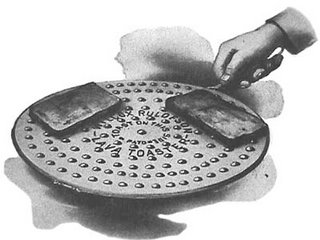
here a little overview on cordless toasters http://www.toaster.org/cordless.html
About 6,000 years ago, ancient Egyptians developed breads as we know them today. They discovered that if they let bread dough sit out in Egypt's nice, warm climate, it would puff up, and if this dough was baked in an enclosed oven it would retain its fluffiness. This seemingly magical process was not fully understood until the 17th Century when the microscope revealed the yeast cells that cause leavening.
The process of scorching bread to preserve it spread through many cultures. The word toast comes from the Latin Torrere, Tostum - to scorch or burn. The Romans, in their conquests, took their love of toasted bread with them and spread the custom farther, even up into Britain. Later, English colonists brought the tradition to the Americas.
Toasting bread does more than just preserve it, of course, it changes its nature; bread becomes sweeter, crunchier and the perfect surface on which to spread all sorts of things.
 16th Century Hearth Toaster |
Most toasting devices made up until the 20th century were unique, hand-crafted items made by the local blacksmith. "The blacksmith appreciated his own work, often embellishing his toasters with curlicues, scrolls, hearts, and loops. The toasters had long handles so that the cook's hands would be well away from the heat," wrote Louise K. Kantz in The Story of the Toaster, which appeared in Spinning Wheel, November 1973.
Earl Lifshey, in his book The Housewares Story, speculated that, "the first regularly manufactured toasters in [the United States] were probably the tin and wire affairs designed to set over a coal stove opening or a gas burner."
The electrical revolution didn't eliminate the invention and production of non-electric toasters and they're still a popular item today with campers, both in the pyramidal and collapsible form.
The 20th century also saw the development of the non-electric sandwich toaster, like the Tonka Toaster shown below. The sandwich toaster opens like a clamshell--you place a slice of bread in the toaster flat, top it with whatever you desire, put another slice of bread on top, close the toaster and hold it over a fire. You end up with a sealed, toasted-whatever-sandwich--yum!

0 Comments:
Post a Comment
<< Home